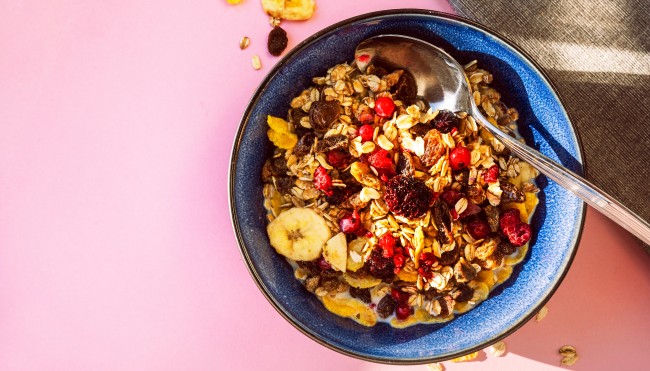The Cholesterol Debate: Is it Off the Black List?
For decades now, we have been taught to read the labels and avoid foods that contain cholesterol, to learn to differentiate between “good” and “bad” cholesterol and to adore foods that help to lower bad cholesterol while upping the good cholesterol.
Now, recent media outlets are making it seem like all this time, we have been lied to! That there is no such thing as good and bad cholesterol, and that it doesn’t make a whole lot of sense to avoid foods with cholesterol.
This is all so confusing! Don’t worry, we are right there with you to take a closer look at the facts (as they stand today) and help give you some guidance about the cholesterol debate.
First of All, What Is Cholesterol?
Just like all nutrients, it's important to gain a basic understanding of what it is, and what its role and function is within a healthy body to determine whether it is good, bad, or neither.
As you read that previous sentence, you may have had to think twice about cholesterol being a nutrient. You aren’t alone… it is actually quite a common question.
Cholesterol is a lipid (or a fat). Fat is a nutrient, and considering all types of fat, we actually need a significant amount of fat in order to stay healthy. It’s not like the type of fat that sits around the waist and thighs. Cholesterol is found in your bloodstream. Not all the fat we need is cholesterol, of course, but it does play an important role in the body.
Don’t just take it from us – take it from the National Heart, Lung, and Blood Institute: “Your body needs some cholesterol to make hormones, vitamin D, and substances that help you digest foods. Your body makes all the cholesterol it needs. However, cholesterol also is found in some of the foods you eat.”
Cholesterol comes from animal foods. Plant foods have their own version of cholesterol, called phytosterols, but aren’t good for humans, so they aren´t absorbed by the intestine for the most part.
Cholesterol is divided into two different types: Low-Density Lipoprotein (LDL) and High-Density Lipoprotein (HDL).
LDL: This is the type of cholesterol known as “bad” cholesterol. This is kind of a misnomer. LDL takes necessary cholesterol to different parts of the body to be used for hormones, it converts Vitamin D in the skin into a usable form, and more. But too much LDL in the blood is a problem because it causes plaque buildup in the artery walls. Plaque buildup can cause blood flow to your heart to be partially or completely blocked, causing coronary heart disease and, eventually, a heart attack.
HDL: High-Density Lipoprotein is known as the “good” cholesterol. It takes excess LDL from the artery walls and bloodstream. A high HDL level is desirable, and it is inversely related to high LDL scores.
So Then, What is the Debate About?
For decades, it was believed that cholesterol from the diet causes high cholesterol in the blood. As recent as the 2010 Dietary Guidelines for Americans, cholesterol was one of the food elements said to be limited to 300mg a day. This all changed, however, in 2015, when the new Dietary Guidelines came out. There is no research to link dietary cholesterol to high LDL (“bad”) cholesterol levels, so the new guidelines no longer state the 300mg of dietary cholesterol per day.
Wait, So Cholesterol in Food Doesn’t Affect Blood Cholesterol?
In short, research shows that it doesn’t really have an effect on most healthy people.
Only 15% of blood cholesterol comes from what we eat. The other 85% comes from the liver.
Note that this isn’t true for people with type 2 diabetes; if you are diabetic, it seems that dietary cholesterol does affect blood cholesterol, partly due to altered metabolic pathways.
Then What Causes High Blood Cholesterol?
Unfortunately, it’s not as simple as shifting from pointing to one culprit to another. High cholesterol levels result from a set of complex factors. Some of these include:
- Genetics: some people are genetically predisposed to having higher cholesterol levels than other people.
- Diets high in saturated fat: the 2015-2020 Dietary Guidelines state that a diet high in saturated fat is a risk factor for high cholesterol, as well as for a range of other health issues.
- Diets low in fruits and vegetables: people with the healthiest cholesterol levels also have a diet that meets or surpasses the dietary recommendations for daily fruit and vegetable servings.
- Lack of physical activity: While this is not yet proven, initial evidence shows that there might be a positive relationship between physical activity and healthy HDL levels, particularly in men.
- Other illnesses: As mentioned before, people with type 2 diabetes are more vulnerable to having high cholesterol levels.
Does This Mean You Can Go Ahead and Eat Tons of Cholesterol-Rich Foods?
Please don’t! Why not? Foods that are high in cholesterol also tend to be high in saturated fat, which you should avoid. To quote the 2015 Dietary Guidelines, “In general, foods that are higher in dietary cholesterol, such as fatty meats and high-fat dairy products, are also higher in saturated fats.” Diets high in saturated fats do increase your risk of cardiovascular disease.
In The End, It’s All About Dietary Patterns
Dietary patterns are the complex interactions between foods and food components you eat on a whole over time. If you get your fill with pizza, hamburgers, fries, and nachos with cheese, you will be at a much greater risk than someone who is a vegetarian.
Choose fresh plant-based foods often, and limit your intake of fatty animal foods, processed foods, and store-bought baked goods.
While you no longer need to be counting your cholesterol intake, don’t take your eyes off the label quite yet. If you follow these tips, you will likely reduce your risk of high blood cholesterol levels and prevent the devastating resulting consequences.





